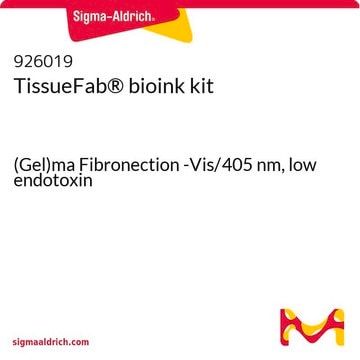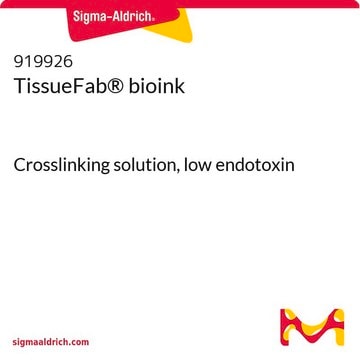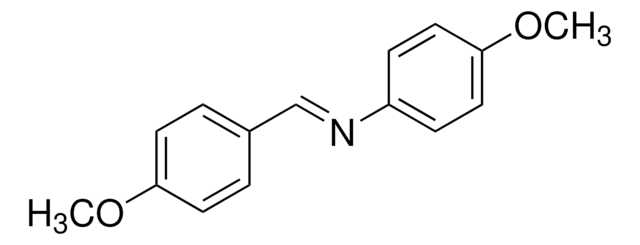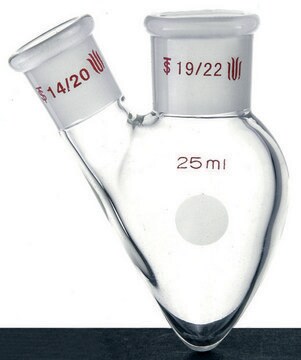推荐产品
形狀
viscous liquid
雜質
<25 EU/mL Endotoxin
顏色
white
pH值
6.5-7
密度
1.050 g/mL
應用
3D bioprinting
儲存溫度
2-8°C
一般說明
3D bioprinting is the printing of biocompatible materials, cells, growth factors, and the other supporting materials necessary to yield functional complex living tissues. 3D bioprinting has been used to generate several different types of tissue such as skin, bone, vascular grafts, and cartilage structures. Based upon the desired properties, different materials and formulations can be used to generate both hard and soft tissues. While several 3D printing methods exist, due to the sensitivity of the materials used, extrusion-based methods with bioinks are most commonly employed.
Material comes prepackaged in syringe with 5ml of product.
Material comes prepackaged in syringe with 5ml of product.
Alginate-RGD bioink, a natural biopolymer, is a biocompatible polysaccharide extracted from brown algae and modified with RGD peptide sequence by binding with peptide carboxylic acid functional group through carbodiimide chemistry.
應用
Alginate-RGD bioink has mild gelling characteristics at room temperature that makes it useful in the encapsulation of cells. It can be used in the formation of hydrogel-based bioink for the production of tissue-mimetic 3-D structures.
Due to its low cost, biocompatibility, and facile gelation, alginate is one of the most common components of commercial bioinks. Alginate is a naturally-occurring polysaccharide, obtained from the cell walls of brown algae, that is composed of guluronic and mannuronic acid. Alginate has been shown to readily form hydrogels under mild conditions and Arg-Gly-Asp (RGD) motifs have been added to improve cell adhesion after printing. Alginate-RGD acellular bioink is provided as a ready-to-print, low endotoxin, and aseptic formulation in 5 mL syringes.
法律資訊
Product of Cellink
儲存類別代碼
12 - Non Combustible Liquids
水污染物質分類(WGK)
WGK 2
閃點(°F)
Not applicable
閃點(°C)
Not applicable
其他客户在看
Phage as versatile nanoink for printing 3-D cell-laden scaffolds
Lee D, et al.
Acta Biomaterialia, 29(15-16), 112-124 (2016)
Behavior of encapsulated MG-63 cells in RGD and gelatine-modified alginate hydrogels
Grigore A, et al.
Tissue Engineering: Part A, 20(15-16), 2140-2150 (2014)
3D bioprinting of hydrogel-based biomimetic microenvironments
Luo Y, et al.
Journal of Biomedical Materials Research. Part B, Applied Biomaterials, 107(5), 1695-1705 (2019)
Carmen C Piras et al.
Biomaterials science, 5(10), 1988-1992 (2017-08-23)
3D bioprinting is a new developing technology with lots of promise in tissue engineering and regenerative medicine. Being biocompatible, biodegradable, renewable and cost-effective, cellulosic nanomaterials have recently captured the attention of researchers due to their applicability as inks for 3D
P Selcan Gungor-Ozkerim et al.
Biomaterials science, 6(5), 915-946 (2018-03-02)
Bioprinting is an emerging technology with various applications in making functional tissue constructs to replace injured or diseased tissues. It is a relatively new approach that provides high reproducibility and precise control over the fabricated constructs in an automated manner
商品
Professor Shrike Zhang (Harvard Medical School, USA) discusses advances in 3D-bioprinted tissue models for in vitro drug testing, reviews bioink selections, and provides application examples of 3D bioprinting in tissue model biofabrication.
实验方案
Frequently asked questions (FAQs) for KAPA SYBR® FAST One-Step qRT-PCR Kits.
我们的科学家团队拥有各种研究领域经验,包括生命科学、材料科学、化学合成、色谱、分析及许多其他领域.
联系技术服务部门












